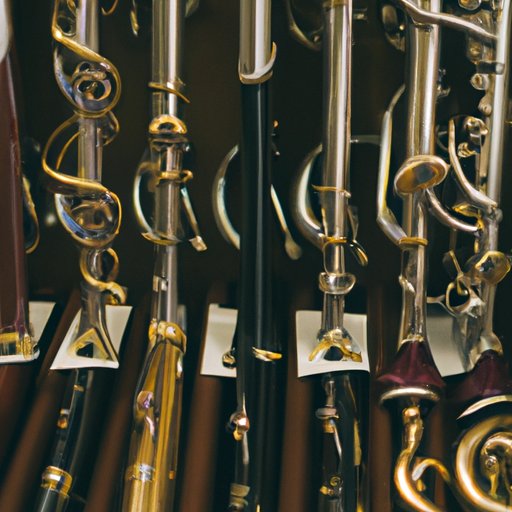Introduction
When it comes to picking out a musical instrument to learn, there are so many choices that it can be overwhelming. Whether you’re a beginner or a seasoned musician, it’s important to consider factors such as your skills, goals, and tastes in order to choose the right instrument for you. In this article, we’ll explore what to consider when selecting a musical instrument and provide a guide to help you choose the right one for you.

A Guide to Choosing the Right Musical Instrument for You
When selecting a musical instrument, there are several things you should consider. First, think about your skill level. Are you a beginner or a more advanced player? This can help you narrow down your options and decide which instruments are best suited to your abilities. Additionally, consider your goals. Are you interested in playing solo or in a group? Do you want to learn to read music or just play by ear? Knowing your goals can help you select an instrument that is best suited for your needs.
It’s also important to research different types of musical instruments. There are four main categories: strings, woodwinds, brass, and percussion. Strings include guitars, violins, and cellos. Woodwinds include flutes, clarinets, and saxophones. Brass instruments include trumpets, trombones, and tubas. Percussion instruments include drums, cymbals, and xylophones. Each type of instrument has its own unique sound and advantages, so it’s important to familiarize yourself with the different options before making a decision.

Exploring Different Types of Musical Instruments and Their Benefits
Strings are a popular choice for beginners because they are relatively easy to learn. Guitars and violins are two of the most common string instruments. They are versatile, portable, and relatively inexpensive. Strings are also great for playing solo or in a band. Additionally, strings are often used in folk and classical music.
Woodwinds are another popular option. Flutes, clarinets, and saxophones are all examples of woodwind instruments. These instruments have a mellow tone and are often used in jazz and classical music. Woodwinds are great for solo performances, but they are also commonly used in ensembles. They are relatively easy to learn and are often used in school bands.
Brass instruments are known for their loud, powerful sound. Trumpets, trombones, and tubas are all brass instruments. They are often used in marching bands and orchestras. Brass instruments are great for performing solo or in a group. Additionally, brass instruments are relatively easy to learn and require less maintenance than some other instruments.
Percussion instruments are known for their rhythmic sound. Drums, cymbals, and xylophones are all examples of percussion instruments. These instruments are great for playing in a band or orchestra, as well as for solo performances. Percussion instruments are also relatively easy to learn and require minimal maintenance.

Tips for Deciding What Musical Instrument to Learn
Once you know what type of instrument you’d like to learn, it’s time to start researching specific instruments. Talk to musicians who play the instrument you’re interested in. Ask them about their experience and advice for learning the instrument. Additionally, listen to music featuring the instrument you’re interested in. This will give you an idea of the sound of the instrument and the type of music it is used in. Finally, try out different instruments to get a feel for the ones you like best.
How to Find the Perfect Musical Instrument for Your Skill Level
Once you’ve narrowed down your options, it’s time to find the perfect musical instrument for your skill level. Start by doing your research. Read reviews from other players and watch videos of people playing the instrument. Additionally, rent or borrow an instrument before you buy. This will give you an opportunity to make sure the instrument is right for you. Finally, take lessons to ensure you’re learning the instrument correctly.
The Pros and Cons of Learning Different Musical Instruments
It’s important to consider the pros and cons of each type of instrument before deciding which one to learn. For example, strings are relatively easy to learn and they produce a beautiful sound. However, they require frequent tuning and can be expensive. Woodwinds are great for solo and ensemble performances, but they require good breath control and may be difficult to learn. Brass instruments are loud and powerful, but they require a lot of practice to master. Percussion instruments are fun to play, but they are often difficult to tune and can be expensive.
Conclusion
Choosing a musical instrument can be a daunting task, but with the right information and guidance, you can find the perfect instrument for your skill level. Consider your skills, goals, and tastes when selecting an instrument. Research different types of instruments and their benefits. Talk to musicians, listen to music, and try out different instruments. Do your research, rent or borrow an instrument, and take lessons. Finally, consider the pros and cons of each type of instrument. With this guide, you’ll be able to find the perfect instrument for you.
(Note: Is this article not meeting your expectations? Do you have knowledge or insights to share? Unlock new opportunities and expand your reach by joining our authors team. Click Registration to join us and share your expertise with our readers.)
